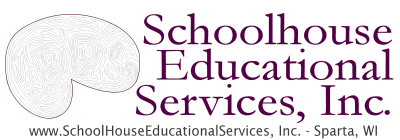Why Sentence Completion Information Can Improve Assessment and Intervention!
Revisiting The Benefits Of Sentence Completion Tasks
I was surprised when Cecil Reynolds told me that he wanted to publish a sentence completion test he was calling the Haak-2. I had not heard about or thought about sentence completion tasks in many years. The focus now days is on norm-referenced performance tests.
Sentence Completion Tasks Elicit Responses That Increase Understanding of the Child
I immediately thought back to my own experiences with sentence completion tasks. I had used them during my internship and early school psychology years in the mid-1980s. I found them very useful from the start. The child’s responses gave me insights into the child’s thinking and feelings and led to a better conversation and interview with the child. I also thought that sentence completion tasks were a good way of getting at what the child would not directly admit to or talk about it. That is, they were a good way of finding out what was really going on.
Sentence completion tasks also helped me understand why the child was behaving in certain ways. However, like most practicing school psychologists I felt pressured to keep my assessments focused on the referral questions and special education eligibility. No one on the evaluation teams seemed interested in what I might have learned about the child through a sentence completion task. Also, although I never thought of a sentence completion task as projective, it was usually classified as such. The psychometric world we practice in seemed to frown on projectives. The result was that by the early 1990s I had stopped using them.
Why Sentence Completion Now?
With all the social, emotional, behavioral, and mental health problems that so many children are experiencing now days I believe it is once again time to use an assessment instrument that is more than just a norm-referenced, quantitative measure. Although such measures are important they don’t tell us enough of the child’s story, leaving our understanding of the child lacking. With greater understanding we can better meet the child’s needs.
I find Dr. Reynolds’s update of the Haak-2 to be refreshing. The sentence stems are more comprehensive than I remember from the old, simple ones I used to use, and its seem to be better job at eliciting responses. However, the most useful thing about the Haak-2 is its organizational structure, where the questions are re-organized by themes after the child has completed the responses. The other neat thing about the Haak-2 is the in-depth, comprehensive manual that has several illustrative case studies. I think lots of professions will find it useful; it’s not just for those who do psychological assessment. For example, school counselors and school social workers could use it to gain information that will guide treatment.
Financial interest disclosure: Milton Dehn is co-owner of Schoolhouse Educational Services which publishes the Haak-2.
